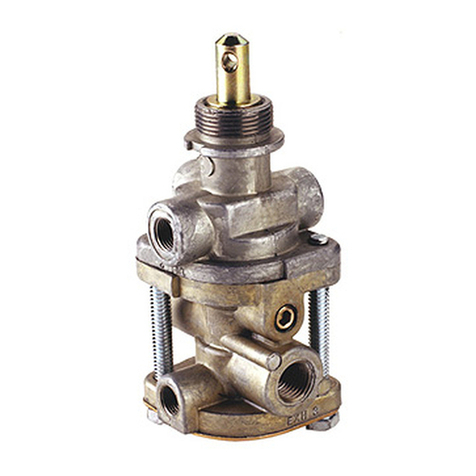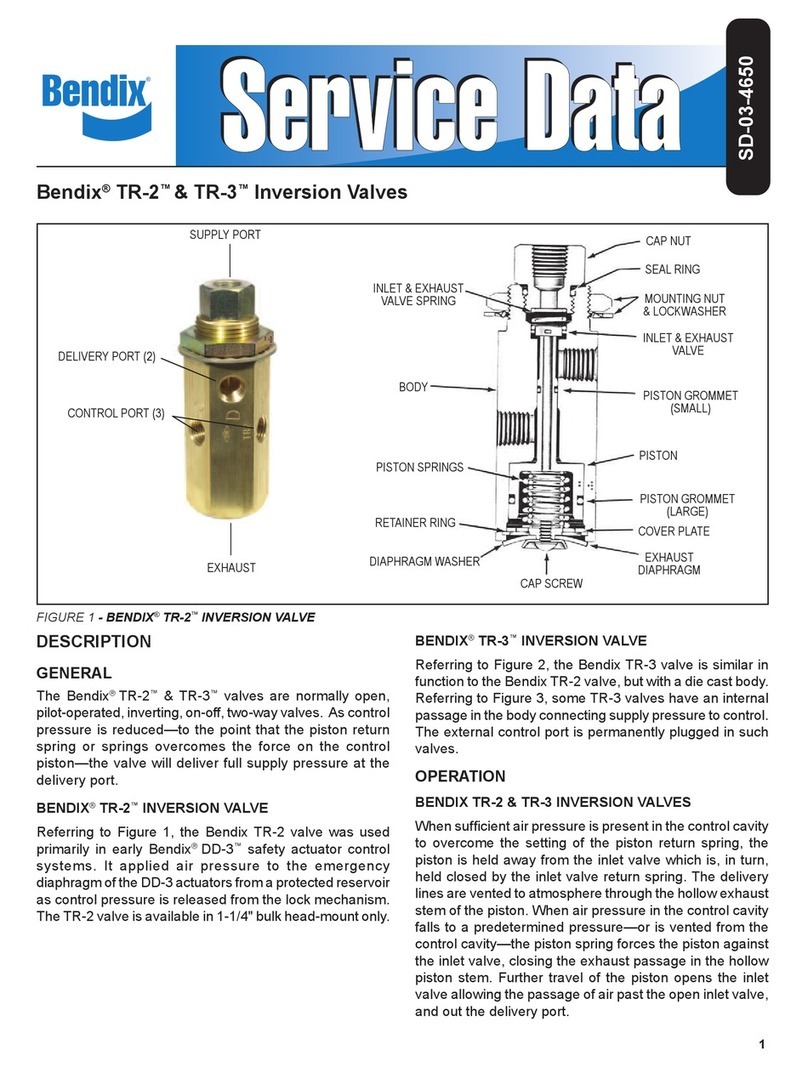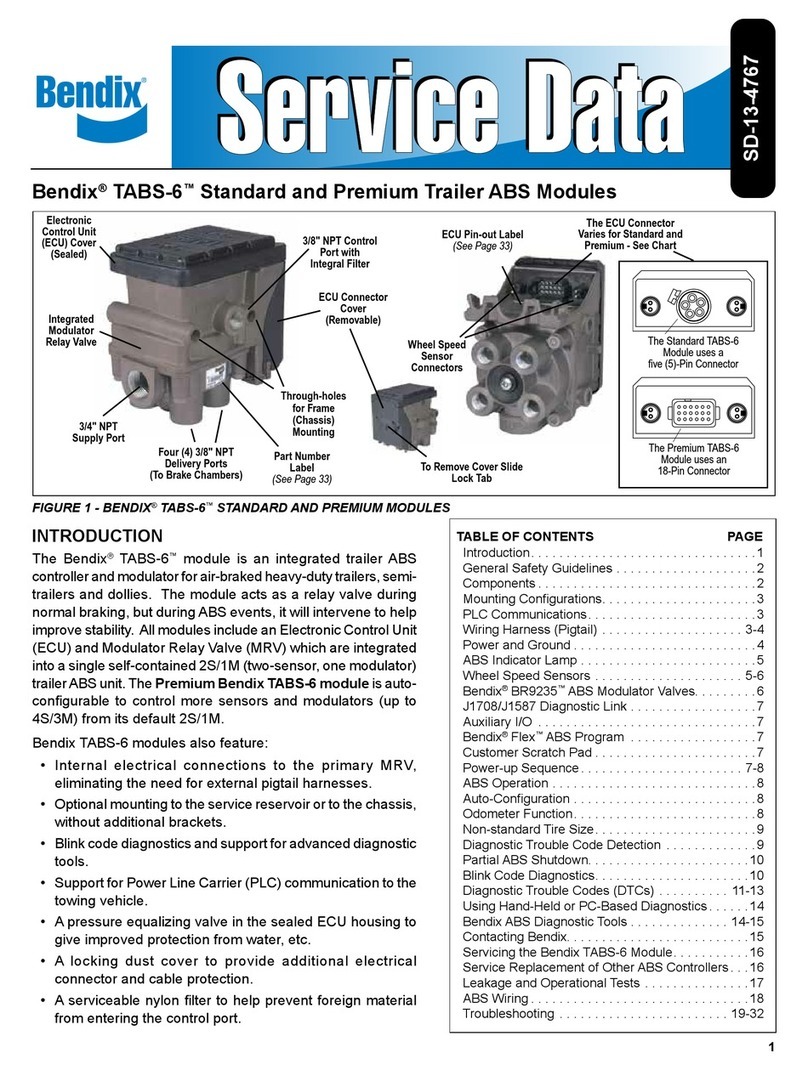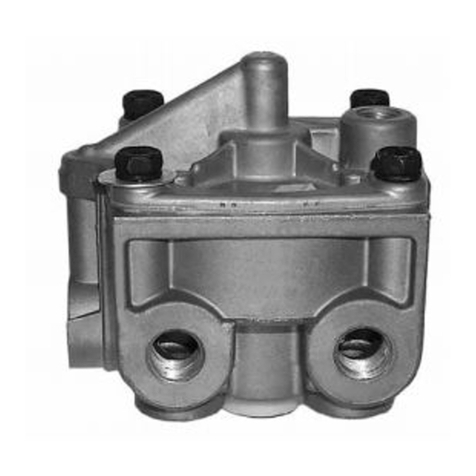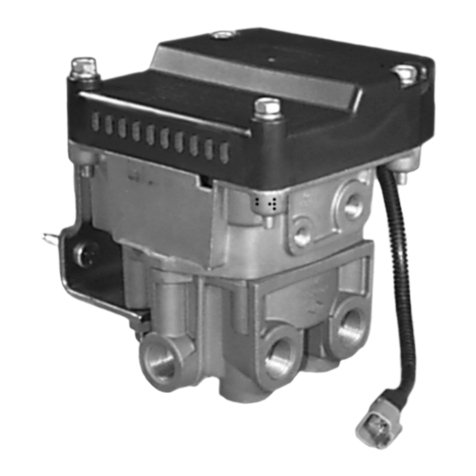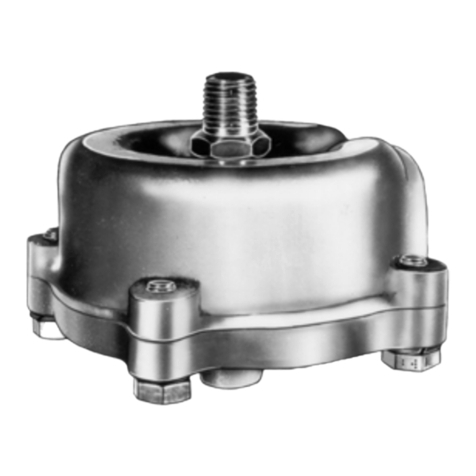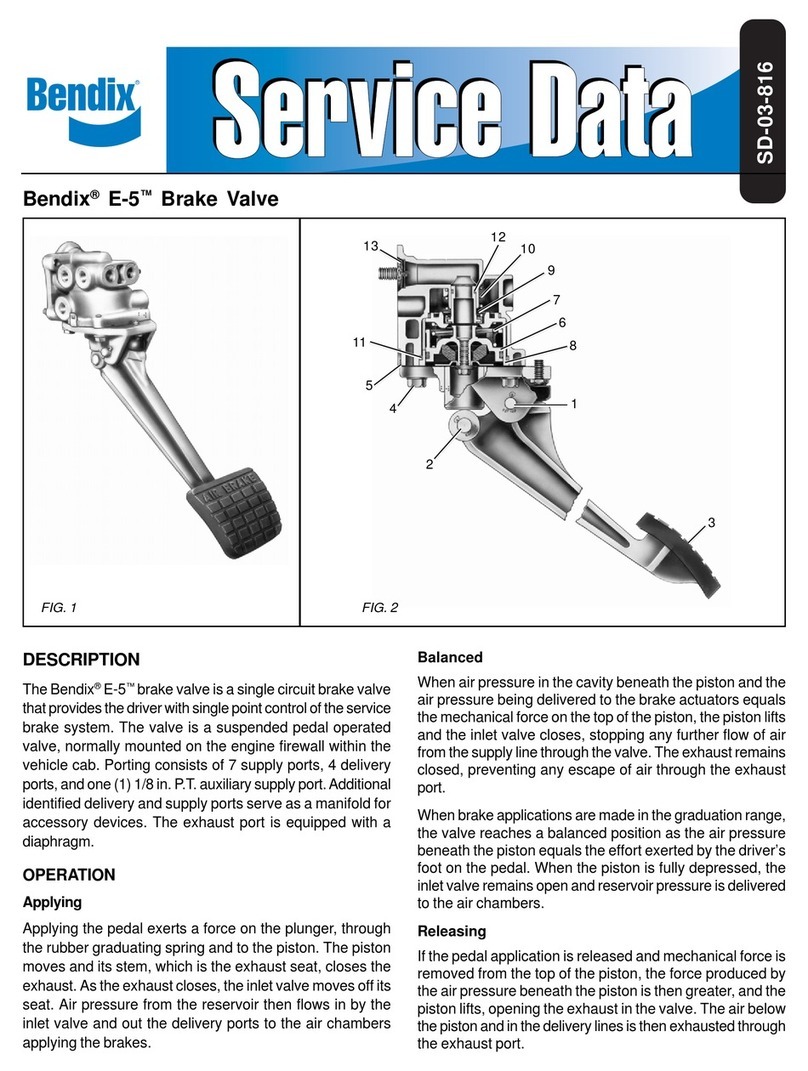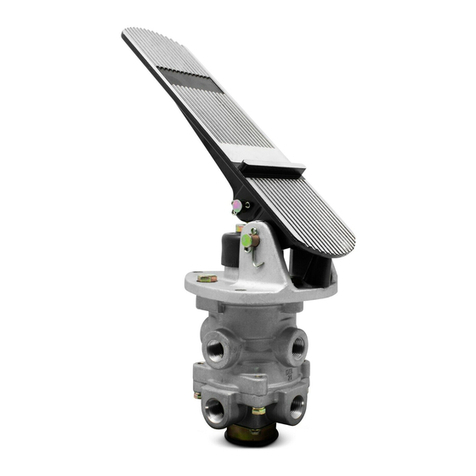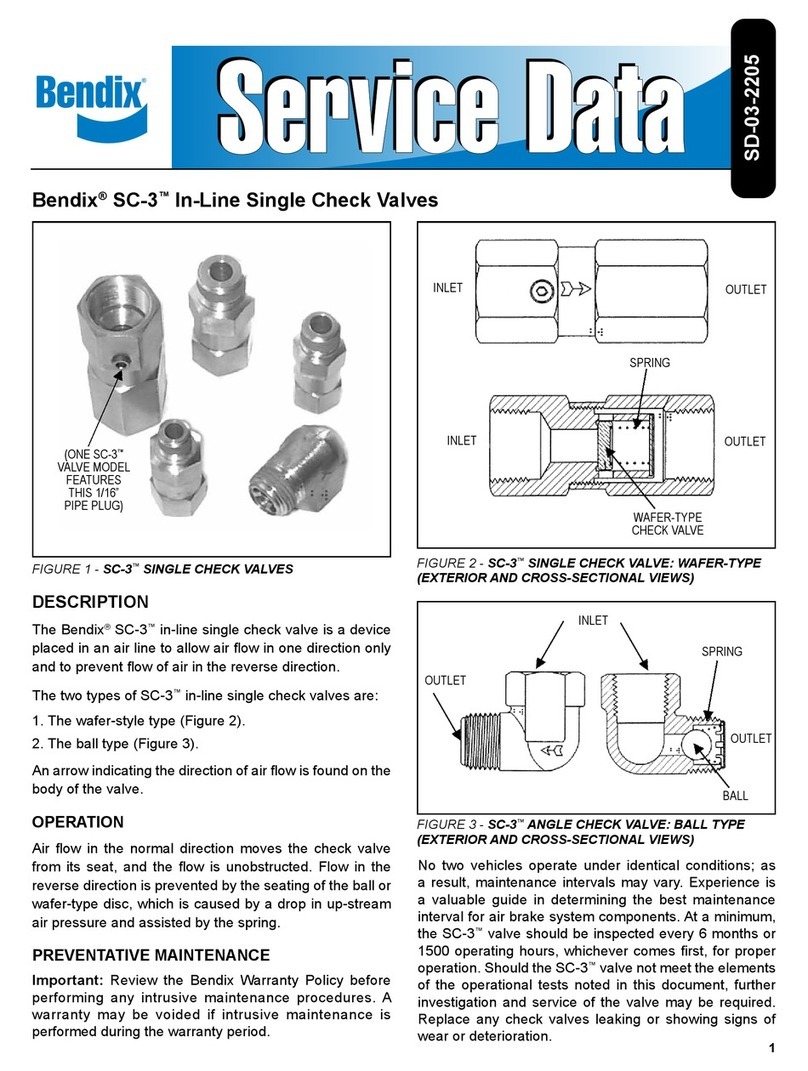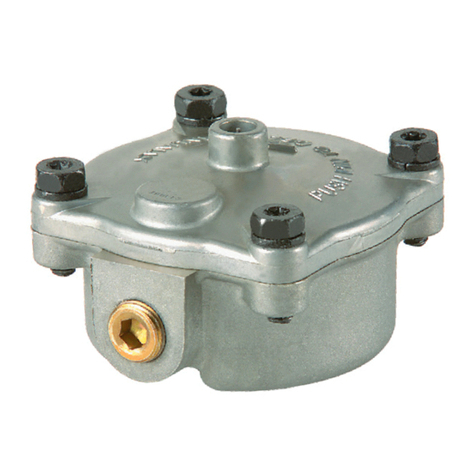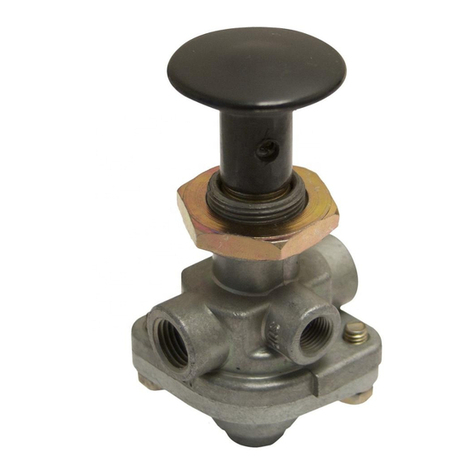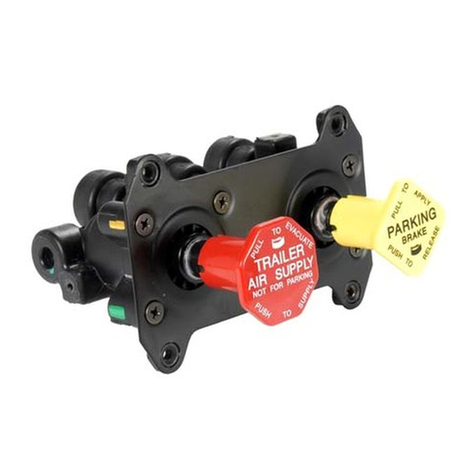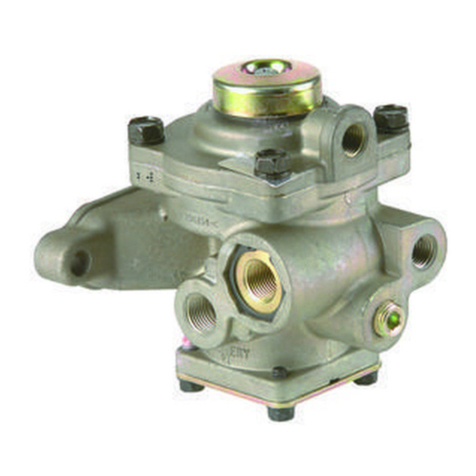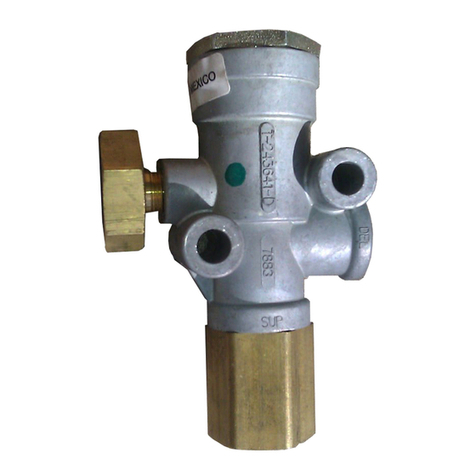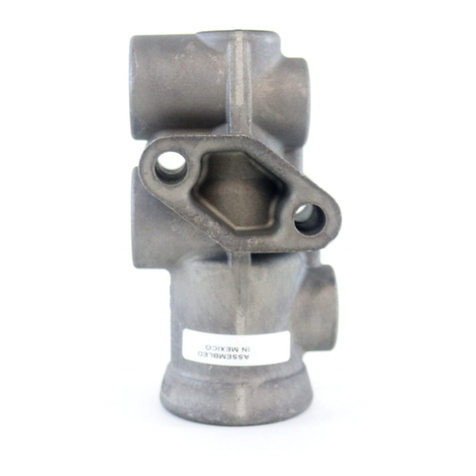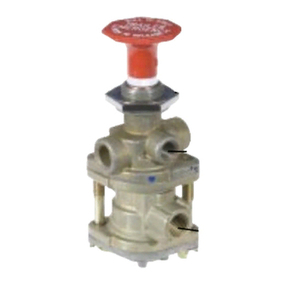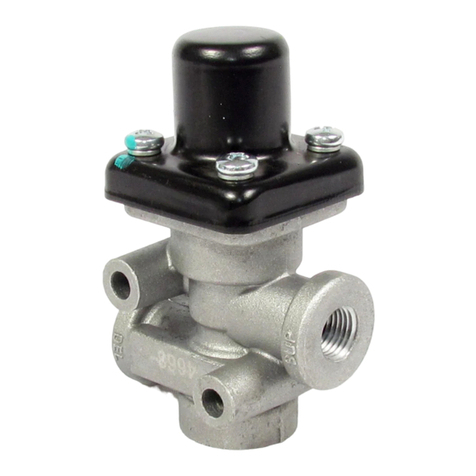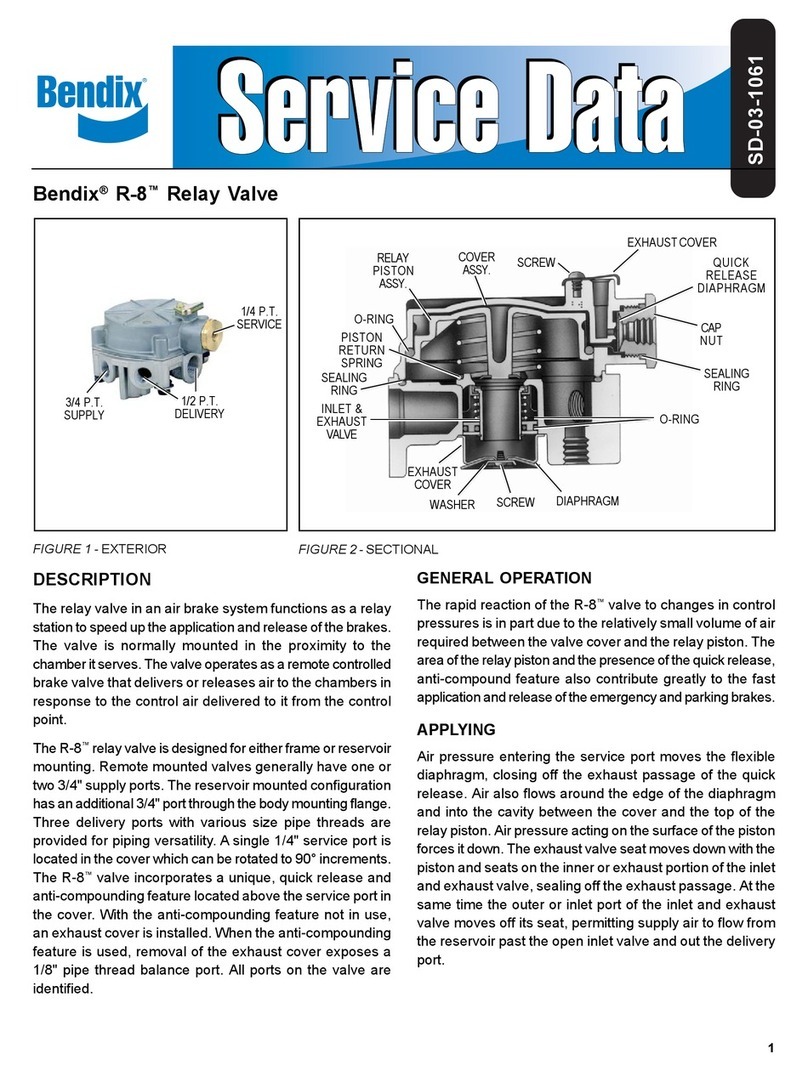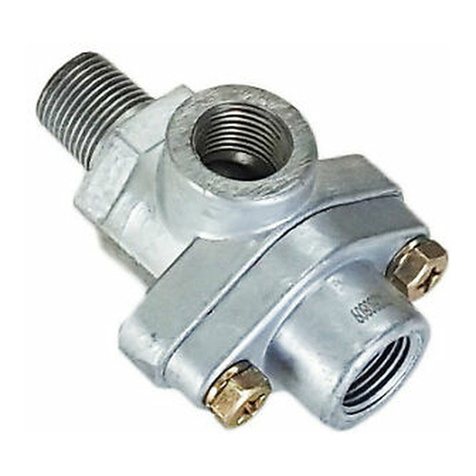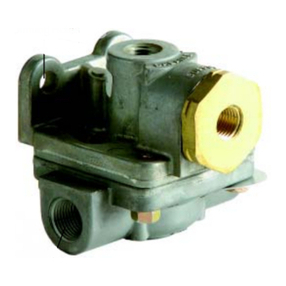
3
DESCRIPTION
The TC-4™modulating control valve is a cam operated,
graduating type control valve. The valve is used to control
theapplication andrelease ofspring brakeactuators, andis
generallymountedinthecab withineasy reachof thedriver.
Modulatedcontrol ofthe emergencybrakes (springbrakes)
iseffectedbymovingthevalve’sspringloadedlever.Moving
the lever against the resistance of the spring applies the
brakesand,allowing thevalvehandletoreturn, releasesthe
brakes.
When the valve is used for parking, the locking button is
moved into the locked position after the handle has been
moved to the “Brakes Applied” position. The lever is now
mechanically locked in position. To release the lever, the
leveris slightly depressed,the lockbuttonmoved outofthe
locked position and the lever returned to the “Brakes
Released”position.
Portingconsists of one (1)supply port, two (2)delivery and
two (2) exhaust ports.
OPERATION
Reference Figure 2, the TC-4™valve is generally used in
conjunctionwith a relayvalveto control theapplication and
releaseof the springbrakes.In atypicalsystem, the TC-4™
valve and the relay valve receive supply air from the
emergency/parkingreservoir.
RELEASED POSITION (Spring Brakes Released)
In the normal run position, air enters the supply port of the
TC-4™valve,flowsbytheopeninletvalveandoutthedelivery
port.Air flows to the service(control) port of therelayvalve
causing the relay valve to deliver air to the spring brakes,
holdingthemin the released position.
APPLYPOSITION (Spring BrakesApplied)
Movingthe lever to the applypositionallows the inlet valve
to close and the exhaust passage to open. This allows the
air being delivered to the service (control) port of the relay
valveto exhaust toatmosphere (through theexhaust of the
foot brake valve). With air exhausted from the service
(control) port of the relay valve, the relay valve responds,
exhaustingtheairfromthespringbrakes(allowingthebrakes
to apply).
With sufficient air pressure in the emergency/parking
reservoir, modulation of the spring brake application is
possible; the amount of braking force governed by the
positionoftheTC-4™valvelever.
With reference to Figure 2, note that the exhaust of the
TC-4™valveis connectedto a deliveryline of thefoot brake
valve. This prevents the compounding of spring brake and
service brake application forces on the slack adjusters.
PREVENTIVE MAINTENANCE
Important: Review the Bendix Warranty Policy before
performinganyintrusivemaintenanceprocedures.Awarranty
maybe voidedif intrusive maintenanceis performedduring
thewarranty period.
No two vehicles operate under identical conditions, as a
result, maintenance intervals may vary. Experience is a
valuableguideindeterminingthebestmaintenanceinterval
forair brake systemcomponents.At aminimum, theTC-4™
valveshouldbeinspectedevery6monthsor1500operating
hours,whichevercomes first, for proper operation. Should
the TC-4™valve not meet the elements of the operational
testsnotedinthisdocument,furtherinvestigationandservice
ofthe valvemay berequired.
Checkforproperoperationbeforeplacingvehicleinoperation.
OPERATING AND LEAKAGE TESTS
Ifvalve is to betestedon vehicle, block thevehiclewheels.
Build system pressure to approximately 100 psi and place
lever to “apply” position and observe that spring brakes
apply.
With lever in apply position, lock lever in place with locking
button.Coatexhaustportwithsoapsolution; leakageshould
not exceed a 1" bubble in less than 5 seconds.
(NOTE: If lineis connected toexhaustport, disconnect line
or remove pipe plug from other exhaust port.)
Excessiveleakagewouldindicateafaultyinletvalve.
Releaselockingbutton and place leverinrelease position;
observe that brakes fully release. Coat exhaust port with
soapsolution; leakageshould notexceeda 1"bubble innot
less than 5 seconds. Excessive leakage would indicate
exhaustvalveor lowero-ring leakage.(Iflineatexhaust port
wasdisconnected, connectline and/ortightenfitting orpipe
plug.)
Removedial; whilemaking afull footvalveapplication, coat
top of valve with soap solution. Leakage permitted is a 1"
bubble in not less than 5 seconds.
Excessiveleakage would indicate uppero-ringleakage. (If
lineis not connected toexhaustport, it will benecessaryto
apply 100 psi to the exhaust port to check for upper o-ring
leakage.)
Soap area around supply port cap nut to check for cap nut
o-ringleakage. No leakagepermitted.
Blow out or dry all soap solution and replace dial.
To check modulation of valve, it will be necessary to test
while vehicle is in motion. Select a suitable location to
performbrakingtest.Withvehicleinmotion,applytheTC-4™
valveseveraltimes.
